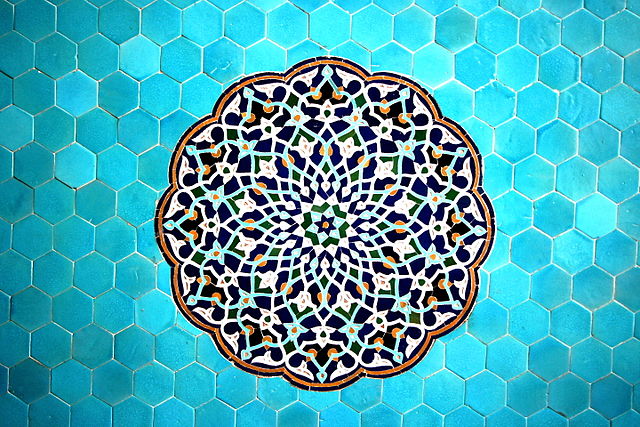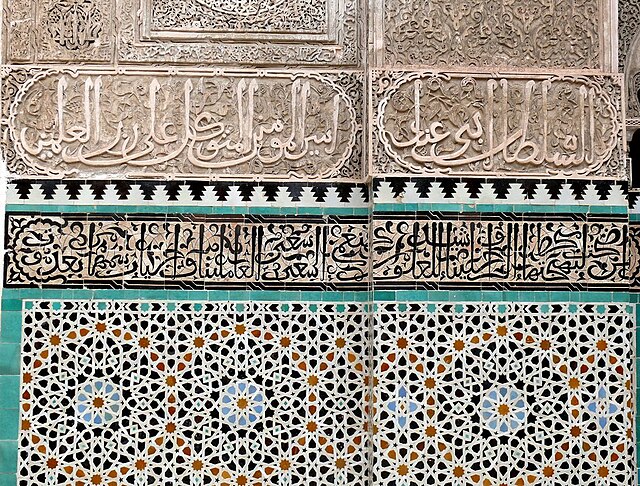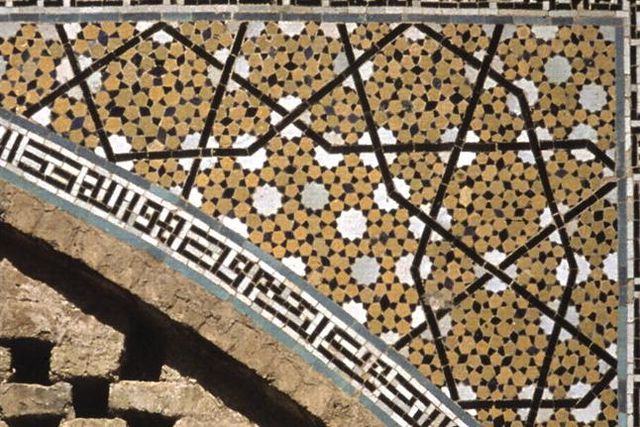Islamic geometric patterns
Islamic geometric patterns are one of the major forms of Islamic ornament, which tends to avoid using figurative images, as it is forbidden to create a representation of an important Islamic figure according to many holy scriptures.
Detail of minaret socle of the Bibi Khanum Mosque, Samarkand, Uzbekistan.The arched vertical panels are decorated with different geometric patterns, featuring 10-, 8- and 5-pointed stars.
A doorway in Ben Youssef Madrasa, Marrakech. The Atlas cedar doors have carved strapwork with a 16-point star. The arch is surrounded with arabesques; to either side is a band of Islamic calligraphy, above zellij tilework.
Tiles inside the Jame Mosque of Yazd, Persia, with geometric and vegetal patterns
Bou Inania Madrasa, Fes, Morocco, originally c. 1350, with geometric patterns in zellij tilework
Islamic ornament is the use of decorative forms and patterns in Islamic art and Islamic architecture. Its elements can be broadly divided into the arabesque, using curving plant-based elements, geometric patterns with straight lines or regular curves, and calligraphy, consisting of religious texts with stylized appearance, used both decoratively and to convey meaning. All three often involve elaborate interlacing in various mediums.
Geometric, arabesque, and calligraphic patterns ornamenting the Mihrab at the Jama Masjid, Fatehpur Sikri
Geometric Zellij tilework, stucco decoration with Arabic calligraphy and arabesques at Bou Inania Madrasa, Fes
Stone relief with arabesques of tendrils, palmettes and half-palmettes in the Umayyad Mosque at Damascus
Girih geometric pattern at the Darb-e Imam, Isfahan








